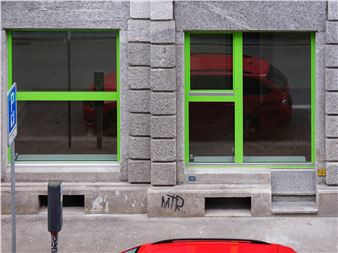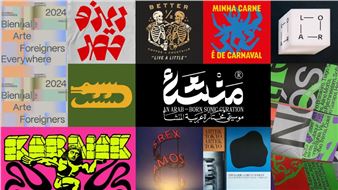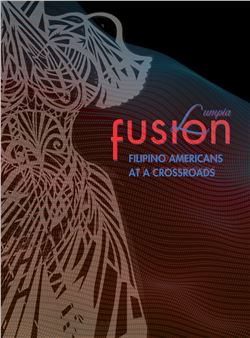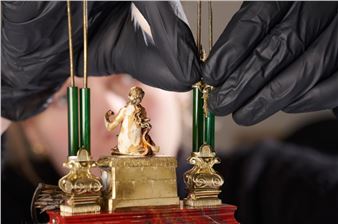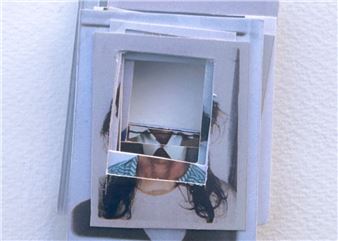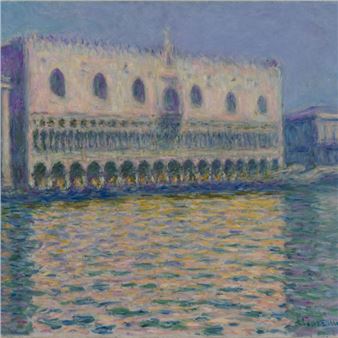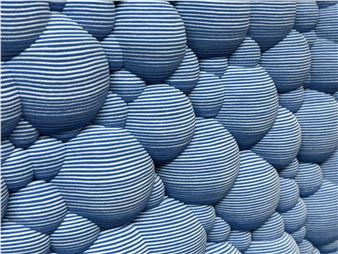Avram Finkelstein: Something Terrible Has Happened (Corpus Fluxus)
Smack Mellon is thrilled to present Something Terrible Has Happened (Corpus Fluxus), the first major exhibition of personal artworks by artist Avram Finkelstein in NYC. The exhibition brings together multiple interconnected bodies of drawing works that span the narrative of his own coming out to a reconsideration of the layered nature of accessibility based on his increasing disability. The exhibition will feature a series of freestanding and moveable drawings, large-scale digitally-printed works on fabric, and wall-mounted drawings that unearth significant moments in the artist’s personal history. Activating a full loop–both temporally through his life story and in the spatial choreography–the exhibition offers a beginning, moves to the current moment, and back again.
The focus of this exhibition is the body, in its physicality, metaphysical ideations, and shape-shifting porosities–the corpus fluxus. In addition to figures from his memories, these bodies also take the form of what he refers to as golems. Rooted in Jewish folklore, golems are mutable beings often animated to life from clay or dust. They are vessels for a variety of metaphors–carriers of light, those deemed dirty or “unsophisticated,” or representations of divinity–depending on the source and context. Here, Finkelstein captures the ambiguity of these forms. The “mud” that he uses is his own mark making, in gesso, pencil, and oil pastel, made through gestures that highlight his increasing loss of mobility through the marks’ gradual drift away from tight renderings over time.
The free-standing drawings are mounted to wheeled metal structures that also function as weight-bearing mobility devices for Finkelstein to move around his studio. These drawings appear on both sides of the works–dualities that both are separated and bound by their multiple viewing perspectives. In Golem (Don’s Bath) (2024), one side presents a gessoed abstraction, forming a “ghost” in the approximate size and shape of a body, while the other reveals a drawing of the first partner the artist lost to AIDS emerging through the marks as if from the surface of water.
Also on display are a series of drawings that reference the artist’s attempt to come out at the age of fifteen in 1967, two years before the Stonewall Riots, leading to a psych evaluation involving a Thematic Apperception Test. Similar to Rorschach testing, the artist was shown a number of images and asked to describe them in order to determine his mental wellness. Finkelstein has replicated some of these images from memory, which hang alongside other scenes he experienced during this time. In a scale and material shift, the large-scale hanging works softly interrupt the gallery space, creating pathways for and moving in tandem with viewers’ bodies. Digitally printed on translucent fabric, these works activate dual encounters of vision in how the material simultaneously obscures and reveals. This duality alludes to the often invisible nature of disability that occurs beneath a body’s surface, as well as how, in a world ill-equipped to care for those not fully able, those bodies are actively erased by lacking the means to participate.
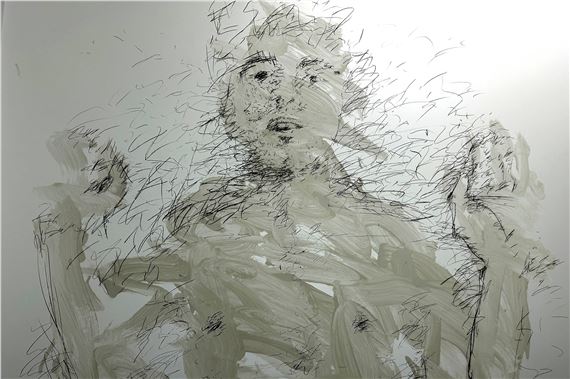
Recommended for you
Smack Mellon is thrilled to present Something Terrible Has Happened (Corpus Fluxus), the first major exhibition of personal artworks by artist Avram Finkelstein in NYC. The exhibition brings together multiple interconnected bodies of drawing works that span the narrative of his own coming out to a reconsideration of the layered nature of accessibility based on his increasing disability. The exhibition will feature a series of freestanding and moveable drawings, large-scale digitally-printed works on fabric, and wall-mounted drawings that unearth significant moments in the artist’s personal history. Activating a full loop–both temporally through his life story and in the spatial choreography–the exhibition offers a beginning, moves to the current moment, and back again.
The focus of this exhibition is the body, in its physicality, metaphysical ideations, and shape-shifting porosities–the corpus fluxus. In addition to figures from his memories, these bodies also take the form of what he refers to as golems. Rooted in Jewish folklore, golems are mutable beings often animated to life from clay or dust. They are vessels for a variety of metaphors–carriers of light, those deemed dirty or “unsophisticated,” or representations of divinity–depending on the source and context. Here, Finkelstein captures the ambiguity of these forms. The “mud” that he uses is his own mark making, in gesso, pencil, and oil pastel, made through gestures that highlight his increasing loss of mobility through the marks’ gradual drift away from tight renderings over time.
The free-standing drawings are mounted to wheeled metal structures that also function as weight-bearing mobility devices for Finkelstein to move around his studio. These drawings appear on both sides of the works–dualities that both are separated and bound by their multiple viewing perspectives. In Golem (Don’s Bath) (2024), one side presents a gessoed abstraction, forming a “ghost” in the approximate size and shape of a body, while the other reveals a drawing of the first partner the artist lost to AIDS emerging through the marks as if from the surface of water.
Also on display are a series of drawings that reference the artist’s attempt to come out at the age of fifteen in 1967, two years before the Stonewall Riots, leading to a psych evaluation involving a Thematic Apperception Test. Similar to Rorschach testing, the artist was shown a number of images and asked to describe them in order to determine his mental wellness. Finkelstein has replicated some of these images from memory, which hang alongside other scenes he experienced during this time. In a scale and material shift, the large-scale hanging works softly interrupt the gallery space, creating pathways for and moving in tandem with viewers’ bodies. Digitally printed on translucent fabric, these works activate dual encounters of vision in how the material simultaneously obscures and reveals. This duality alludes to the often invisible nature of disability that occurs beneath a body’s surface, as well as how, in a world ill-equipped to care for those not fully able, those bodies are actively erased by lacking the means to participate.
Artists on show
Contact details

Related articles
A golem is a figure in Jewish folklore usually made of clay, mud, or dust; a vessel for a word or idea, a metaphor come to life.

 ARTISTS
ARTISTS







